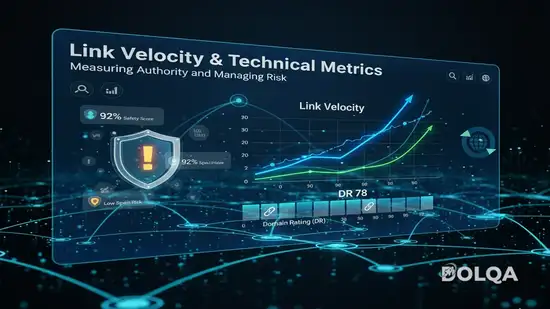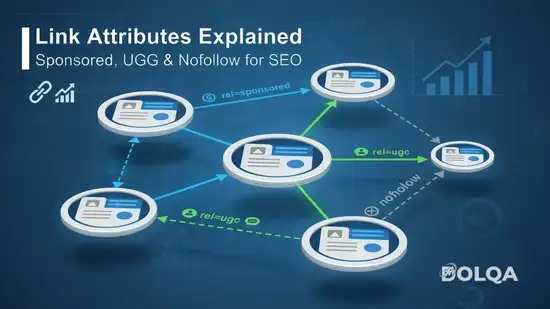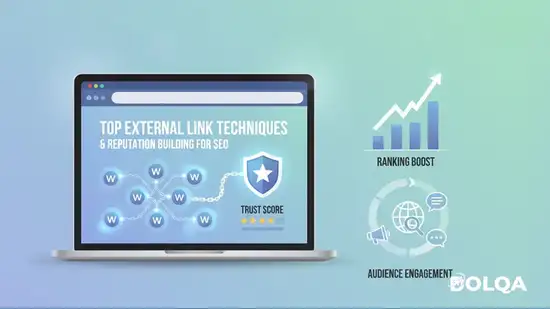Link Velocity and Technical Metrics: Quantifying Authority and Proactive Risk Mitigation
Introduction: The Foundation of Strategic Link Building
In the world of Search Engine Optimization, understanding how backlinks accumulate over time is essential for building sustainable rankings. Link velocity SEO—the rate at which your website acquires new backlinks—serves as a critical indicator of natural growth patterns versus manipulative tactics that can trigger penalties.
For beginners entering the SEO landscape, mastering technical metrics like Domain Rating (DR) and risk mitigation tools such as Google's Disavow tool represents the difference between short-term gains and long-term authority. This article breaks down these complex concepts into actionable strategies you can implement immediately.
Understanding Link Velocity SEO: The Pace of Authority Growth
What is Link Velocity?
Link velocity SEO refers to the speed at which your website gains (or loses) backlinks over a specific timeframe, typically measured monthly. Think of it as the heartbeat of your backlink profile—too slow and you fall behind competitors, too fast and search engines may suspect manipulation.
Industry benchmarks suggest different targets based on site maturity: new websites should aim for approximately five to ten backlinks monthly during their first year, established small to medium businesses can sustain thirty to one hundred backlinks per month, while enterprise brands often acquire over one hundred links monthly.
Why Link Velocity Matters
Search engines like Google monitor link acquisition patterns to identify unnatural growth. A sudden spike from zero to fifty backlinks in a single week raises red flags, especially if those links originate from low-quality or irrelevant sources.
Key principles for healthy link velocity:
- Gradual progression: Increase your link building efforts steadily over time
- Content correlation: Link spikes should align with content launches or PR campaigns
- Quality over quantity: Focus on earning links from relevant, authoritative sources
- Consistency: Maintain steady acquisition rather than sporadic bursts
Domain Rating (DR): Quantifying Website Authority
Decoding the DR Metric
Domain Rating is a metric developed by Ahrefs that evaluates the strength of a website's backlink profile on a logarithmic scale from zero to one hundred, with higher scores indicating stronger authority based on both the quantity and quality of external backlinks.
How DR is Calculated
The Domain Rating calculation considers:
- Number of unique referring domains: More diverse sources equal higher authority
- Quality of linking sites: Links from high-DR websites pass more value
- Link profile freshness: Recent, active links contribute more than old, stagnant ones
Important note: DR does not directly affect Google rankings but serves as a strong predictor because high-DR websites typically possess qualities that Google's algorithm values.
Using DR in Link Building Strategy
When pursuing backlink opportunities:
- Target websites with DR 30+ for competitive niches
- Prioritize relevance over pure DR scores
- Monitor your own DR trends monthly
- Compare your DR against direct competitors
The technical source data reveals that approximately sixty-four percent of SEO professionals use Ahrefs' Domain Rating as their primary authority metric, making it an industry-standard benchmark.
The Disavow Tool: Your Shield Against Toxic Links
When to Use Google's Disavow Tool
Not all backlinks benefit your website. Toxic links from spam networks, irrelevant domains, or malicious sites can damage your authority. Google's Disavow tool allows you to formally request that search engines ignore specific harmful links.
Identifying Toxic Links
Conduct regular backlink audits to identify:
- Spam sources: Private blog networks or link farms
- Unrelated content: Links from completely irrelevant industries
- Over-optimized anchors: Excessive exact-match keyword links
- Suspicious domains: Sites with malware, adult content, or known penalties
How to Disavow Links Properly
Step-by-step process:
- Export your complete backlink profile from Google Search Console
- Analyze links using tools like Ahrefs, Semrush, or Moz
- Create a plain text file (.txt) listing URLs or domains to disavow
- Use the format:
domain:spamsite.comfor entire domains - Upload the file through Google Search Console's Disavow Tool
Critical considerations:
Current best practices emphasize that relevance matters more than meeting specific backlink quotas, and white-hat strategies should always take priority. Google's algorithms have improved at automatically identifying and discounting low-quality links, which explains why only thirty-nine percent of SEO experts currently use the Disavow tool regularly.
Integrating Velocity Control with Authority Building
Creating a Balanced Strategy
The most effective approach combines:
- Quality content creation: Develop linkable assets that naturally attract backlinks
- Strategic outreach: Build relationships with high-authority publishers
- Velocity monitoring: Track your link acquisition rate monthly
- Risk assessment: Conduct quarterly backlink audits
- Proactive disavowal: Address toxic links before they accumulate
Digital PR: The Velocity Accelerator
Research indicates that Digital PR ranks as the most effective link-building tactic, chosen by nearly forty-nine percent of SEO professionals. This approach generates newsworthy content that earns mentions from high-tier media outlets, creating natural link velocity spikes that search engines recognize as legitimate.
Measuring Success Beyond Links
Modern algorithms increasingly value unlinked brand mentions—instances where authoritative sites reference your brand without direct hyperlinks. Approximately eighty-one percent of SEO specialists believe these citations influence rankings by demonstrating brand recognition and trustworthiness.
Conclusion: Building Sustainable Authority Through Strategic Measurement
Mastering link velocity SEO, understanding Domain Rating metrics, and utilizing the Disavow tool strategically represents the foundation of sustainable search visibility. Rather than chasing arbitrary link quotas, focus on creating valuable content that naturally attracts authoritative backlinks at a pace aligned with your website's maturity and content output.
Your action plan:
- Audit your current backlink profile using tools like Ahrefs
- Establish baseline velocity targets appropriate for your site's age
- Identify and disavow any toxic links threatening your authority
- Develop a content calendar that supports natural link acquisition
- Monitor your DR monthly and compare against competitors
Success in modern SEO requires patience, precision, and continuous monitoring. Start by understanding your current link velocity—is it too aggressive, too passive, or just right for your goals? The answer will guide your strategy toward building lasting authority that withstands algorithmic updates.
Sources: This article incorporates insights and data from industry research and technical documentation, including the comprehensive analysis available at DOLQA Technical SEO guide on backlinks and link building reputation management, as well as current best practices from leading SEO platforms including Ahrefs, Search Engine Land, and Blue Tree Digital.






Comments (0)
Leave a Comment
No comments yet. Be the first to comment!